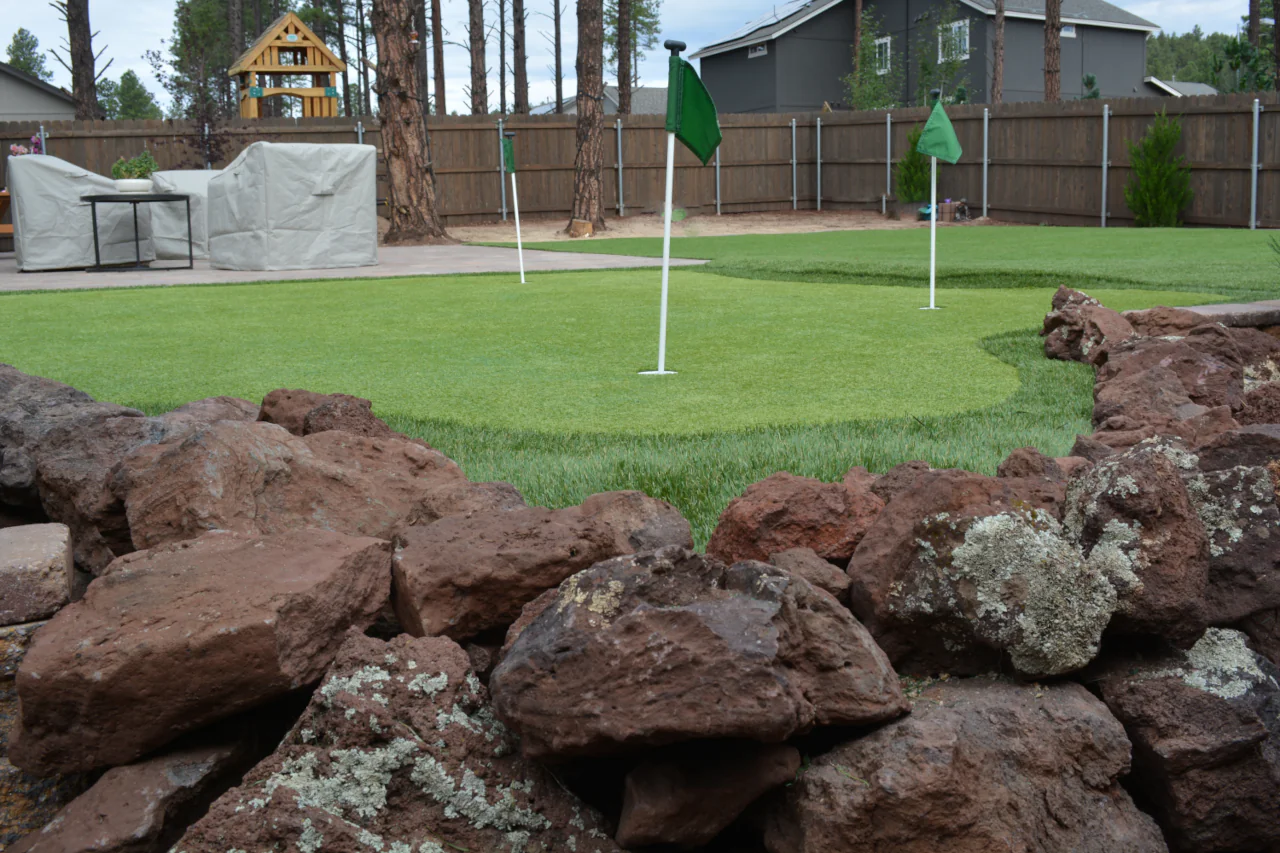How to Design a Three-Hole Practice Green

A three-hole practice green gives you a compact, fun way to boost your short-game performance without taking over the entire yard. This guide walks you through a thoughtful layout, easy pin placement ideas, which turf options work best for a backyard putting green setup, and short training routines. Sprinkle in a touch of creativity and a consistent practice routine, and you’ll be getting more confident strokes in no time.
SIZE, SHAPE, AND HOW IT FITS THE YARD
Start by identifying a flat or mild-slope section that doesn’t interfere with driveways, flower beds, or heavy foot traffic. A typical three-hole green can be built in about 300–700 sq. ft., depending on how much walking you want between holes. Think of three zones that create engaging angles: a straightforward short putt, a medium putt with gentle slope, and a challenging long-break putt.
If you opt for a full synthetic grass installation, pick a spot with ample sunlight and consider how the drainage will work there. Proper base work keeps the surface uniform and helps the turf perform like a real putting surface. If you’re short on space, offset the holes so each one feels unique without needing much added turf.
LAYOUT TIPS THAT MAKE PRACTICE WORTHWHILE
Vary distances: aim for one short-range hole (6–10 ft.), one medium (12–18 ft.), and one long (20–35 ft.). That range necessitates different putting speeds and concentration.
Use subtle contours: small bumps or gentle low spots add interest without requiring major leveling.
Create approach area options: include a small chipping area beside one hole so you can practice pitch-and-putt sequences.
Edge details: a low-profile roll-up edge or small sand feature adds style and gameplay challenges.
Throughout the layout process, mention your installation preference — whether you want a full synthetic turf base or a partial renovation — because artificial grass and artificial turf behave differently depending on prep work.
PIN PLACEMENT IDEAS FOR VARIETY
Rotate pin locations every session. Move pins around the green edges and center to create new read lines. A simple system: three-position pin rotation system where A = front, B = mid-green, C = rear. For extra challenge, place a temporary pin on the side of a gentle slope to train reads and speed control.
Use removable cups or portable pin kits so you can swap pin positions without damaging the turf. Changing pins on synthetic turf putting greens is simple and lets you simulate tournament variety in a Kennewick backyard setting.
SHORT PRACTICE ROUTINES FOR BUSY LIVES
No need for extended training sessions. Try three compact drills that pair with your three-hole design:
Speed Ladder (6–12 minutes): Start at the short hole and putt three balls from each distance band—short, mid, long—focusing on a steady stroke length for each distance.
Break Read Drill (8–12 minutes): From a set position, putt to each of the three holes with the pin in a different spot. Work on analyzing contours and modifying your stroke pace.
Pressure Finish (5–8 minutes): Make two-putt circuits around the three holes. If you complete the circuit successfully, reward yourself with a harder approach next round.
Short routines like these keep skills growing steadily and make practice habit-forming. Mix them throughout the week for well-rounded improvement.
